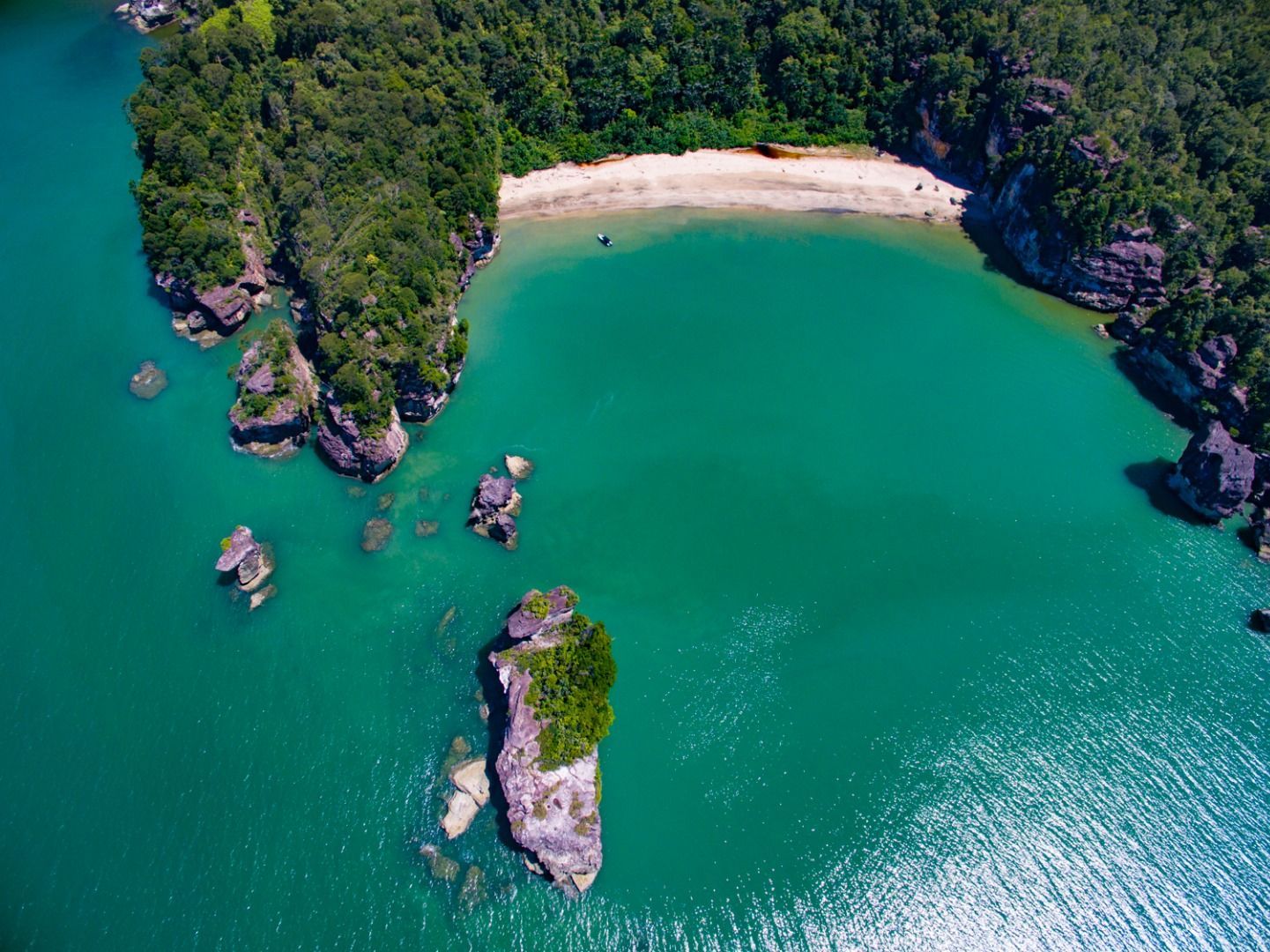
Bako National Park (Sarawak)
A National Park since 1957, Bako offers the perfect introduction to Sarawak’s forests and wildlife. The park covers the northern tip of the Muara Tebas peninsula, an area of 27 sq km.
Tours and Accommodation in Bako National Park




A National Park since 1957, Bako offers the perfect introduction to Sarawak’s forests and wildlife. The park covers the northern tip of the Muara Tebas peninsula, an area of 27 sq km. Despite its seemingly small size, Bako contains a wide range of vegetation – swamp forest, scrub-like padang vegetation, mangrove forest, dipterocarp forest, delicate cliff vegetation and more. In fact, at Bako it is possible to see almost every type of vegetation found in Borneo. Bako also contains a rich variety of wildlife and a coastline covered with small bays, coves and beaches. The park has a number of well-marked trails offering interesting walks ranging from short pleasant strolls to serious full-day hikes. Unlike some national parks, visitors to Bako are almost guaranteed to see wildlife. Long-tailed macaque monkeys and silver leaf monkeys are ever present, wild boar are often found rummaging around the park HQ, squirrels and monitor lizards are also common. There is every chance of seeing the rare and unusual proboscis monkeys on trails such as Telok Paku and Telok Delima, particularly if you go late afternoon. You are more likely to see wildlife if you quietly follow the trails and keep listening. Bako is also home to approximately 275 rare proboscis monkeys, found only in Borneo. The male is an odd-looking creature, with a huge pendulous nose and a large pot-belly, weighing in excess of 20 kg. Both male and female are covered in reddish-brown fur with grey limbs and a white tail. They are mostly arboreal (tree-dwelling), moving about the forest or mangroves in small groups and feeding on young leaves, shoots, sour fruits and seeds. Although it requires some patience, an encounter with a group of proboscis is likely to be the highlight of your trip to Bako. The best times are early in the morning or in the hours before dusk. Telok Delima and Telok Paku are the best trails for viewing the proboscis. The mangroves at Telok Assam are also a good place for viewing proboscis monkeys. Bako’s plant life is both beautiful, and readily accessible. All the trails have a great variety of vegetation, from mighty 80-metre dipterocarps to dense mangrove forest. Carnivorous pitcher plants are found on the Lintang trail. Bako also has some good white sand beaches that provide perfect resting spots in between jungle treks. Telok Pandan Kecil is perhaps Bako’s best beach. After an hour or so the Telok Pandan Kecil trail comes to a rocky headland. The view down to a beautiful secluded bay, and the thought of a swim in the cool waters, has a magical effect on tired calf muscles. The following 20 minute descent suddenly becomes more enjoyable. All of the beaches are bordered by limestone and sandstone cliffs, and the action of the sea has left some remarkable rock formations, such as the famous Sea Stack. If you take a stroll at sunset on Telok Assam beach near the park HQ, you will see hundreds of swifts hovering around their nests at the rocks at the far end of the beach. Don’t leave the beach after the sun disappears behind Mount Santubong. Wait another 20 minutes as the sky’s colours often change dramatically, providing a colourful backdrop to the mountain.
Birding in Bako National Park
Highlight species ~ Rufous-backed Kingfisher, Ruddy Kingfisher, Stork-billed Kingfisher, Red-crowned Barbet, Brown Barbet, White-bellied Woodpecker, Black-&-Red Broadbill, Asian Fairy Bluebird, Mangrove Blue Flycatcher, Velvet-fronted Nuthatch, Abbott’s Babbler, White-chested Babbler, Sunda Scops Owl, Oriental Bay Owl, Buffy Fish Owl & etc.
Treks and Trails
Bako’s extensive trail system is made up of 16 colour-coded jungle trails which offer a range of walking and hiking options. The fit and adventurous can opt for full-day jungle hikes or overnight camping expeditions, whilst those who prefer to take it easy can opt for a relaxing forest walk. The following table provides details of approximate trekking times and distances and the colour codes used in the park.
Text by www.sarawaktourism.com/attraction/bako-national-park
Photo by http://sunkissedliving.blogspot.my/2015/07/bako-national-park.html
